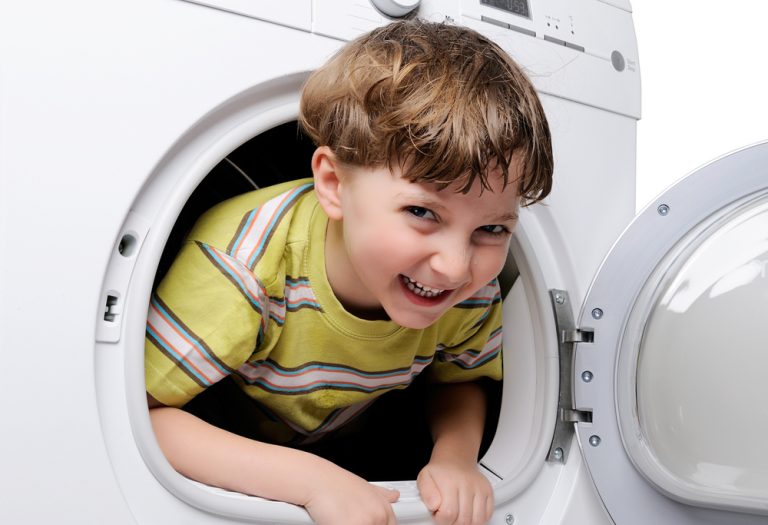
Children today grow up surrounded by devices — from smart speakers and washing machines to robotic vacuums and touch-screen ovens. Technology has become part of the family routine. Yet, many parents hesitate to let their kids use household appliances. They worry about safety, potential damage, or simply that their child “isn’t ready yet.”
In reality, introducing children to household technology early — and safely — can be one of the most valuable lessons in independence, responsibility, and everyday intelligence. Learning to use a washing machine or dishwasher is not just a chore; it’s a form of practical education. It helps a child understand how systems work, how to follow processes, and how to take care of their surroundings.
Why Teaching Household Skills Matters
While schools focus heavily on theory, life skills like operating appliances are often overlooked. Yet, this kind of knowledge builds what educators call functional literacy — the ability to apply understanding to real-world situations.
Here’s why helping children learn to use household devices is so important:
-
It builds independence.
A child who can reheat food, run the washing machine, or vacuum their room feels empowered. They see that they can take care of themselves and contribute to the family — and that sense of capability lasts a lifetime. -
It encourages logical thinking.
Appliances teach cause and effect. Buttons, programs, and safety locks all help kids understand how systems operate. Learning to use them properly strengthens reasoning and planning skills. -
It increases safety awareness.
Paradoxically, children who never learn to use devices safely are more likely to get hurt when they eventually try. Teaching them how and why to be cautious replaces fear with understanding. -
It prepares them for adulthood.
When teenagers move out — to study or work — they face a world where they must cook, clean, and do laundry. Knowing how to handle basic appliances helps them transition smoothly into independent living.
Teaching household technology is, therefore, not just about chores — it’s a lesson in confidence, curiosity, and care for the environment around them.
How to Begin: The Principles of Teaching
The goal is not to overload a child with responsibility, but to introduce technology gradually and positively. Think of it as a partnership — you and your child learning together how the home works.
Here are some key principles to guide the process:
-
Safety first.
Always start by explaining how the appliance works and what could be dangerous. Show them switches, lids, and child locks. Demonstrate proper handling rather than relying on verbal warnings alone. -
Learn by doing together.
Children learn best through shared experience. Turn on the vacuum, select a washing program, or load the dishwasher together. Participation turns learning into connection. -
Encourage, don’t criticize.
Mistakes are part of learning. Instead of correcting harshly, praise effort: “You remembered the right button — great job!” This builds confidence and motivation. -
Use play and curiosity.
For younger kids, frame learning as a fun challenge: “Let’s see who remembers where the power button is!” or “You’re the washing-machine helper today.”
Teaching should always feel empowering, never punitive.
Age-Appropriate Learning
Every age brings a new level of readiness. Below is a simple guide showing what household tasks are suitable at different stages and what skills they build.
| Child’s Age | Devices They Can Learn | Core Skills | Parent’s Role |
|---|---|---|---|
| 3–5 years | Robot vacuum, simple microwave, hand vacuum (with supervision) | Button recognition, observation, following directions | Always assist; emphasize curiosity and safety |
| 6–8 years | Washing machine (load/unload), dishwasher, rice cooker | Sequencing steps, coordination, understanding cause and effect | Supervise closely; assign small, achievable tasks |
| 9–12 years | Iron (with help), coffee maker, microwave cooking | Precision, responsibility, understanding settings | Encourage independence while remaining nearby |
| 13+ years | Oven, stove, full appliance use | Planning, time management, self-sufficiency | Transition to trust-based independence |
Of course, these are only guidelines. The real measure is readiness, not age — some children show responsibility earlier, others later. What matters most is patience, trust, and consistency.
Building Habits That Stick
Even when a child knows how to use an appliance, it takes practice to make it part of their routine. Habits form through repetition and motivation — not through orders.
Make it predictable
Set up routines that help children take initiative. For example:
-
“Every Saturday morning, we do laundry together.”
-
“After dinner, you’re in charge of starting the dishwasher.”
Predictability builds both memory and ownership.
Show cause and effect
Children are more engaged when they see the outcome of their actions. “You started the vacuum — now the floor looks great. That was your work!” This strengthens intrinsic motivation — pride in results, not fear of mistakes.
Encourage technical curiosity
Explain how machines function. What makes a motor spin? How does heat clean dishes? A child who asks “why” today may become an engineer tomorrow.
Use smart technology as a teaching tool
Modern appliances often include child-safe modes, automatic shutoffs, and voice guidance. These features make it easier — and safer — to involve children in household routines.
Invite them to make the rules
Ask, “What’s the safest way to use the kettle?” or “How can we save electricity when we cook?” When children help create the rules, they’re more likely to follow them.
Common Mistakes Parents Make
Even with the best intentions, parents sometimes discourage learning without realizing it. Here are a few traps to avoid:
-
“You’re too young.”
Overprotection can delay skill development. Under supervision, even preschoolers can safely push a start button or observe a cycle. -
Criticism instead of guidance.
“You did it wrong again!” only teaches fear. Instead, say: “Let’s try that step together.” -
Doing everything for the child.
Independence doesn’t grow when everything is done for them. Allow small imperfections — the goal is learning, not perfection. -
Rules without reasons.
Saying “Don’t touch that!” isn’t enough. Explain why: “That plug carries electricity — it could hurt you if you pull it out.” Understanding creates respect, not rebellion.
The Deeper Value of Teaching Through Technology
Household chores are often dismissed as routine, but they’re actually powerful teaching tools. When a child loads the washing machine or heats up a meal, they’re not just doing a task — they’re learning process, patience, and purpose.
Each simple routine — sorting clothes, measuring detergent, choosing the right cycle — trains the brain in sequencing, logic, and problem-solving. More importantly, it cultivates a sense of belonging: “I’m helping; I’m part of how our family works.”
From such experiences, children learn:
-
precision and order;
-
patience in waiting for results;
-
attention to safety and detail;
-
empathy and cooperation.
Technology, in this sense, becomes more than convenience — it becomes a bridge to real-world learning. It teaches that tools exist to support human effort, not replace it.
Household Technology as Digital Literacy
In the 21st century, knowing how to use everyday technology safely is as fundamental as reading or writing. This is part of what educators now call technological literacy — the ability to understand, operate, and respect technology.
Children who learn to handle appliances responsibly tend to grow into adults who treat all technology — from smartphones to AI tools — with awareness and care.
They learn to:
-
avoid overloading sockets;
-
monitor energy use;
-
switch devices off when not in use;
-
think about environmental and safety implications.
These lessons shape not only responsible individuals but also sustainable citizens — people who understand the impact of their actions on the environment and others.
From Caution to Confidence: A Parent’s Role
Teaching a child to use household appliances safely isn’t just a set of lessons — it’s a mindset. It’s about moving from fear to trust, from control to partnership.
When a parent says, “You can start the washing machine today,” they’re sending a deeper message: I believe in your ability. That trust fuels a child’s confidence far beyond household skills.
Of course, technology can be risky — burns, spills, shocks are real concerns. But guided practice is the safest way to prevent them. Children who learn the “how” and “why” of safety develop lifelong habits of care and attentiveness.
Over time, they stop seeing appliances as mysterious or dangerous. They see them as tools they can control, understand, and respect — a foundation for both independence and maturity.
Conclusion: Everyday Tasks, Lifelong Lessons
Helping children use household technology safely is not about chores — it’s about preparing them for life. It teaches planning, awareness, and responsibility, but also empathy and cooperation.
As adults, we often underestimate how empowering it can be for a child to do something “grown-up.” Yet, every time they press a button, measure detergent, or see the result of their effort, they take another step toward confidence.
The goal is not just clean clothes or tidy floors. The real achievement lies in raising young people who:
-
understand how systems work;
-
take responsibility for results;
-
respect safety and sustainability;
-
and believe in their own competence.
In a world where technology evolves faster than ever, these lessons are more valuable than any gadget. When parents teach children to use household tools wisely, they’re not just keeping a clean home — they’re raising capable, thoughtful, and self-reliant human beings.

